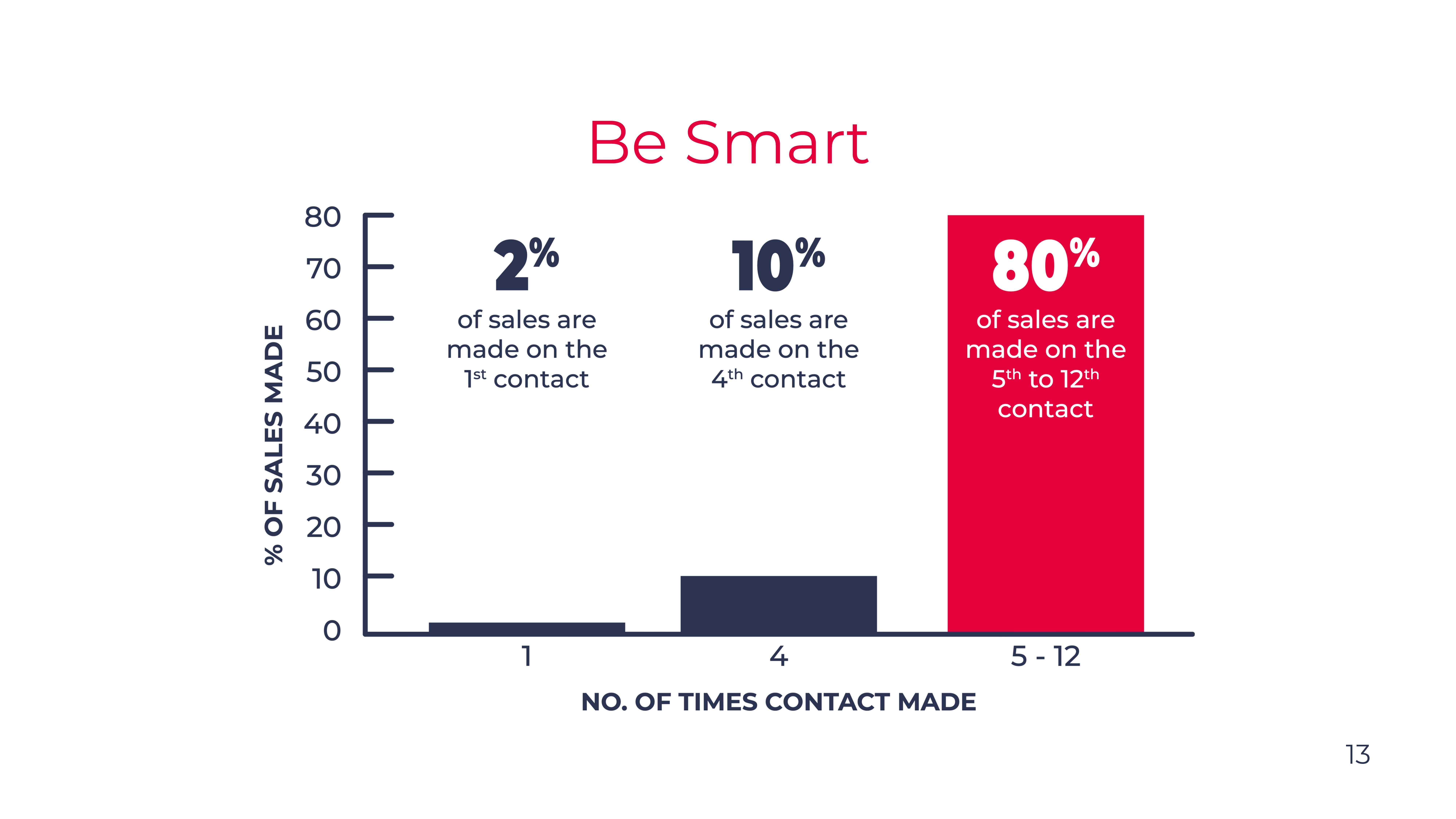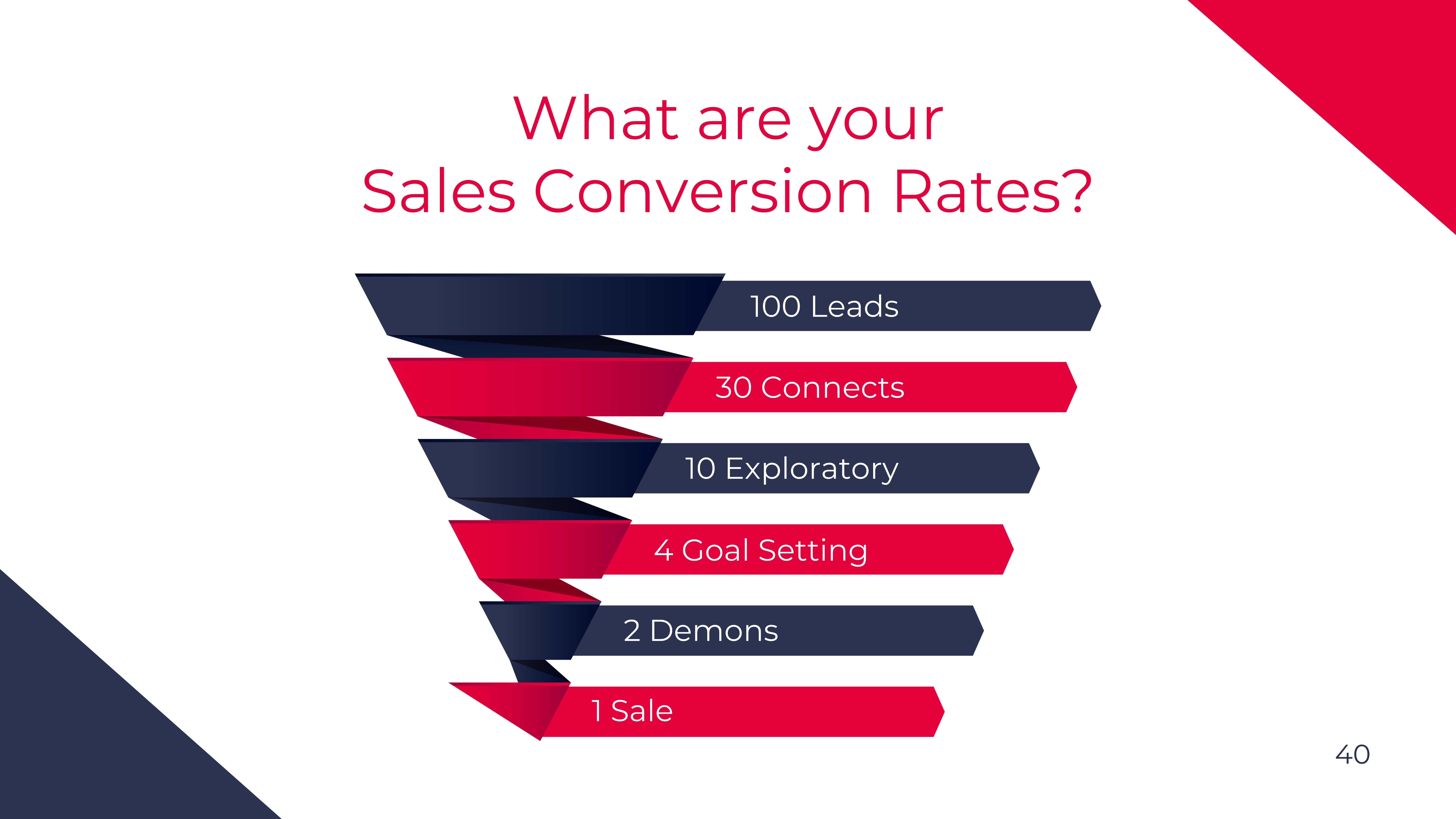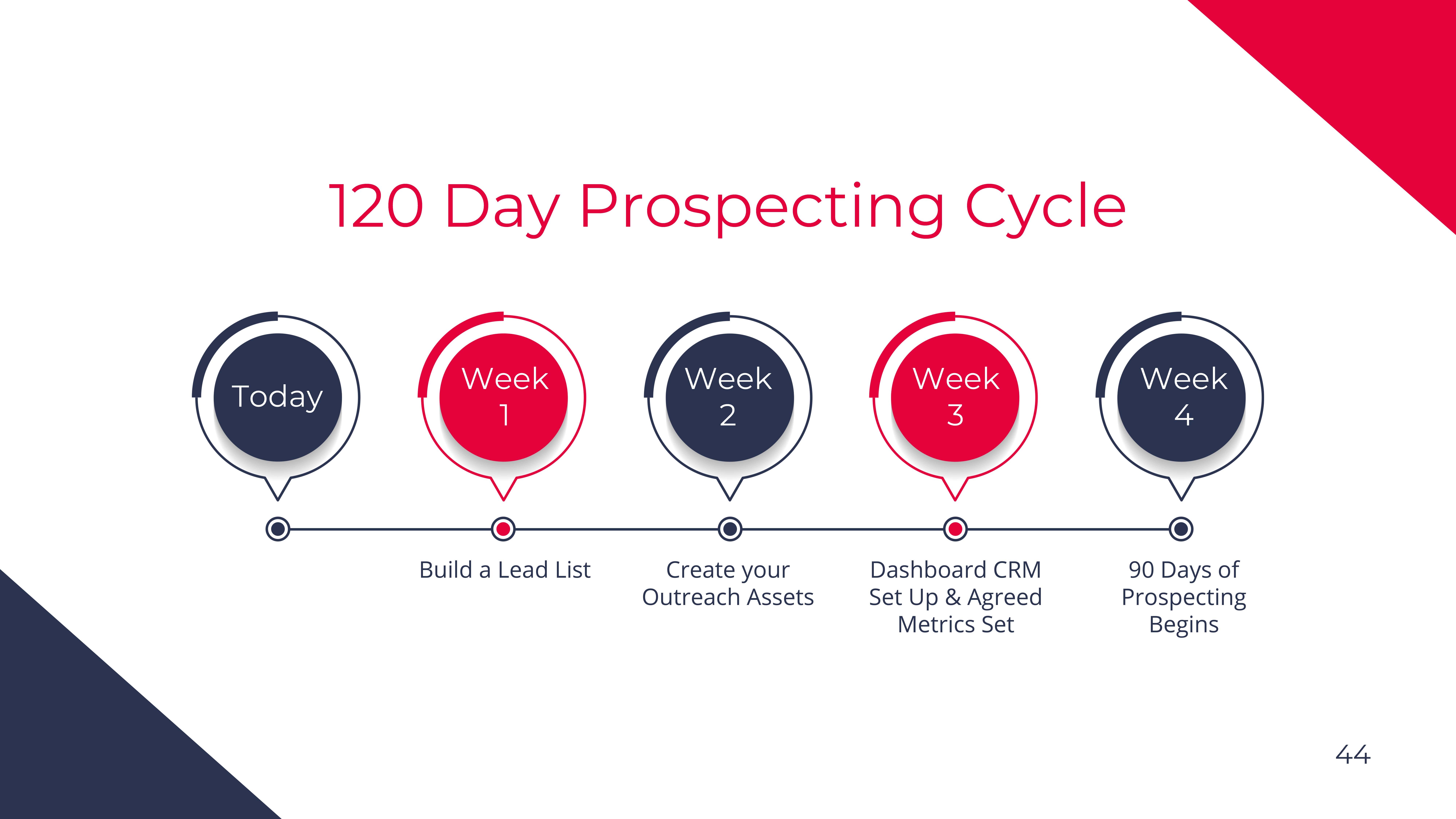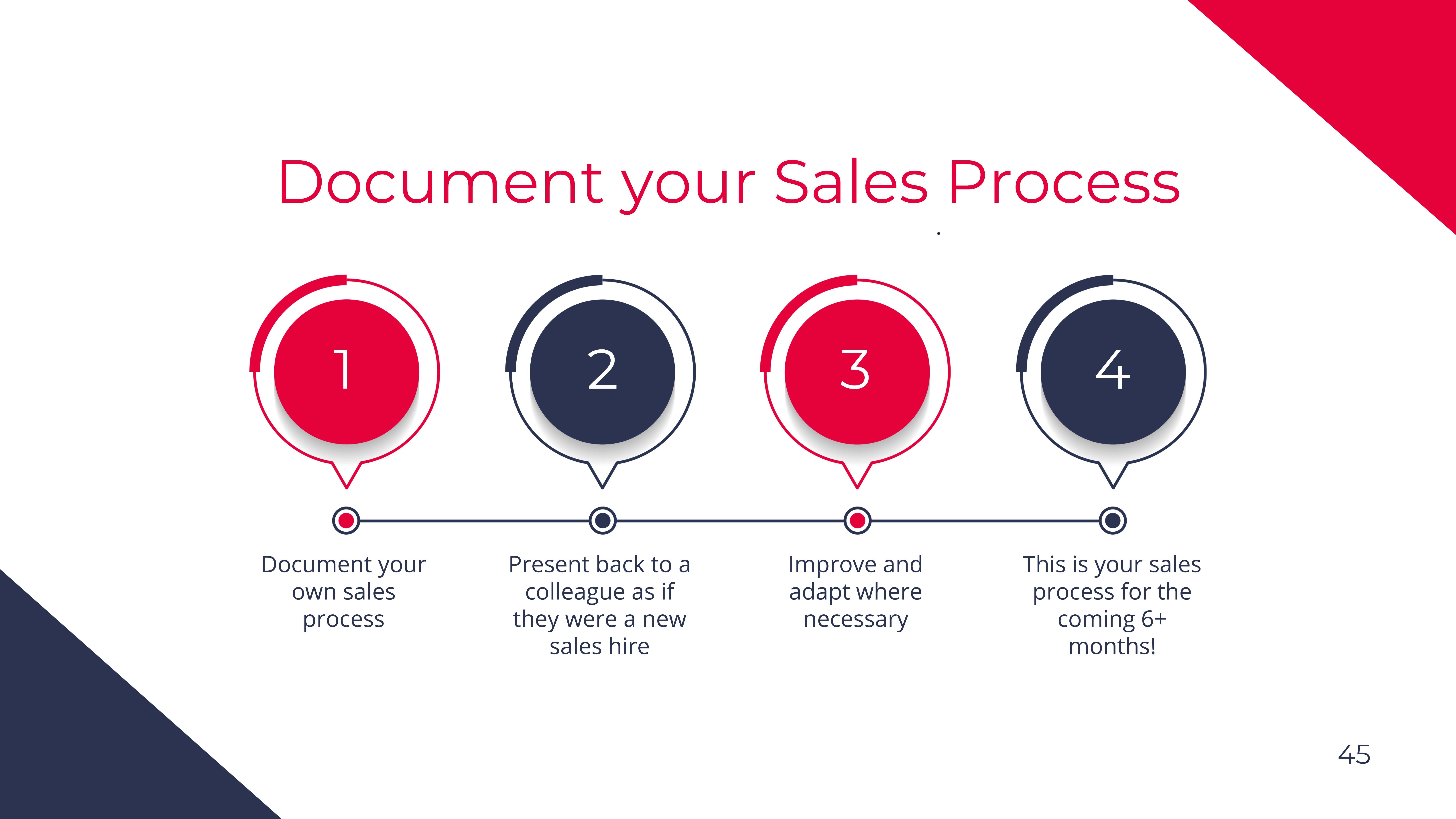How to manage your leads
After all that prospecting, how you manage your leads is just as important. Let’s look at a process you can easily adapt.
SLA - Service level agreement
If your sales team is receiving high numbers of inbound leads, then you need to set a standard SLA to respond within 5 or 10 minutes. Note whilst 10 minutes doesn’t seem like a long time, recent studies show those responded in under 5 have the highest chance of securing a deal.
CRM Views
Ensure that your CRM is connected to the company website and any landing pages so that you can track your prospects’ activity across your digital channels. If your CRM also tracks the documents you share with your customers and prospects, you can always gauge buying signals. Look for an activity like recent page visits, especially your pricing or service/product description pages.
Using tasks and workflows
A good CRM, when combined with either its native or 3rd party sales automation software, should enable your sales team to set tasks and reminders in their calendars to follow up. It should be standard to attach call data to contact records for continuity of progression for the sales reps and if they are out of office or leave.
Workflows can minimise the heavy admin around the outreach and nurturing of qualified leads.
Define your prospecting sequence
For your highly rated leads, you should attempt at least 10 times to connect. A mix of calls (telephone), voicemails, Vidyards and email sequences. It’s now suggested it takes 12 touchpoints to convert an opportunity.
Lower rated opportunities should have less focus. Try halving your process for the highly-rated leads; two calls, voicemails or Vidyards and three email sequences.
Newly qualified leads from website or landing page conversions must be connected within 5 minutes by phone, voicemail or Vidyard and enrolled into an automated email sequence.
Finally, if you are checking recent behaviour in your CRM as a trigger point, review the time spent on pages, when you last contacted them and if it’s a reasonable amount of time, reach out and connect.

A sales process your team can adopt
This is our most definitive sales enablement framework for B2B sales reps. Whether you are a business or sales development rep, this is an executable plan you can action.
Predefined sales stages
-
- Stage 1: Sourcing and prospecting
- Stage 2: Connect call
- Stage 3: Discovery call
- Stage 4: Solution presentation
- Stage 5: Signed contract and kick-off
Stage 1: Sourcing and prospecting
- Standardise your prospecting goals. Identify good-fit companies and ensure you speak to the right people.
- Define your actions. Decide who you do and don’t want to work with and build up a continuously strong pipeline.
- Manage your needs. Weekly time dedicated to sourcing and prospecting.
- Actionable tip: Book calling slots in your calendar for following up on outreach activity.
Stage 2: The connect call
Your goal is to establish an initial relationship, assess mutual fit, and create credibility and trust.- Structure your research into your prospect so you can begin the qualifying process and move to the next steps.
- Quantify the need and challenges of the prospect and get a sense of the timeline and uncover urgency to solve the problem.
- Ask your prospect to complete some homework. It’s a good way to see if they are committed to solving the problem. If they don’t complete it before your call, push back and ask that it’s completed before you move on to the next stage.
- Tips to consider: Automate your follow up, make your process unique to differentiate from other sales plays, and create a useful questionnaire for homework. The outcome should always be either a scheduled discovery call or you are parting ways. Don’t waste time on bad fit prospects.
Stage 3: Discovery meeting
The goal of the discovery phase is to get a deep understanding of your prospects current process, systems, options and qualify for BANT (budget, authority, need and timeline) and GPCT (goals, priority, consequences and alternatives).
- Set the structure. Prepare well and set a clear agenda with objectives. Ensure you lead and steer the conversation and introduce pricing.
- Tip to consider: Run the meeting face to face or on a video call, NOT over the phone. Ensure you can see each other so you can see the focus or attention you are or aren’t getting. The outcome of the call is to move to a scheduled presentation or you are parting ways.
The exploratory call structure
The first stage of the exploratory call is to establish as much detail about the prospect's company or department as possible.
- Ask who are the customers, competitors, what differentiates them, how are they placed in their industry and so on.
- From the company to the department establishing departmental goals, prospects role and decision making power and how it affects the company's bottom line.
- Then you need to establish the BANT. Ask questions about their problems, how they are approaching solving this, what’s worked and failed, what budget has been allocated to it, what budget can be further allocated to it. Question them on the immediacy to solve the issue and in which timeframe do they want to solve it.
- From BANT to GPCA: Find out what the prospects personal, departmental and organisational goals are. What is the priority for each problem to be resolved, the consequences of inaction and what the alternatives to you are?
Stage 4: Solutions presentation
Keep your goal in mind at this stage. You haven’t sealed the deal because you are presenting and keep that in the forefront of your thoughts. On this call, you have to explain your blueprint and roadmap, articulate added value and present estimated ROI whilst handling objections.- Your structure must have a clear agenda with mapped out deliverables to a timeline, presenting expected results. Request feedback at this stage and be prepared to handle objections.
- Understand your clients’ needs. Make sure that you know their numbers and educate and challenge them on your discovered pain points. Drive home where they need to pivot and improve. Again, be prepared to answer common or specific questions or objections.
- Tips to consider: Do the presentation onsite or online, but with ALL stakeholders and or decision-makers available. Have two or three pricing options available based on how aggressive they can be towards achieving their goals. Keep need, ambition and growth central at this stage. The outcome should be a verbal agreement to commit to a scheduled decision call or you’re parting ways. Difficult but even at this stage the prospect may not be fully committed.
Stage 5: Present your official quotation
The goal at this stage is to deliver the quote in person, not to send it over by email and wait for an opportunity to follow up.- Start by clearly outlining services or products, deliverables and expected results vs pricing.
- Set the expectations, structure the call so that you accurately position next steps, including post-purchase onboarding, and handle any objections.
- State the need. Have all stakeholders involved, make it interactive and ask for input to get buy-in.
- Our tip: Do not write the full quotation unless you’re 99% sure it will be accepted. Create a presentation template per product or service in PowerPoint or Qwilr, something visual and engaging but easily edited. The desired outcome is that the quotation is either accepted or you are parting ways.
Measuring your sales conversion rates for success
The best salespeople will measure their activity. Not just for reporting the numbers, but for benchmarking their success in order to improve. Sales isn’t a career where you can get by, especially as most are tied to performance-based commissions.
Therefore knowing your numbers is key to improving your skills and your bank balance. Below is an example of a conversion funnel for a sales rep.
They get:
It's a lot of activity for relatively little reward, but if you are great at generating the leads, you can optimise a standardised sales process to improve your conversion rate through the funnel. With this in mind, it’s all up to you from here. How can you take this plan and make it your own?
Sales process tips and advicE
120-day prospecting cycle
Think of your personal sales process in quarterly sprints. With each quarter you should expect to improve your results in sales and increased sales opportunities. If you aren’t using a standardised sales process, treat today as day one and focus on creating a 120-day prospecting cycle, which should look like this:
Document your sales process
In order to build a standardised sales process, you need to define it and then document it so that you scale it.
Remember, it's an iterative approach to be adopted by the whole sales team. As you discover new ways of closing or prospecting, having documents that historically show your iterations will help you understand how far you’ve come as a sales organisation. The graphic below shows how you can approach this.
BIAS works with product and service organisations to improve customer experience, lead generation and customer acquisition. Please feel free to contact us via our website, on the phone 0203 637 4426 or book a meeting.





%20small.jpg)


